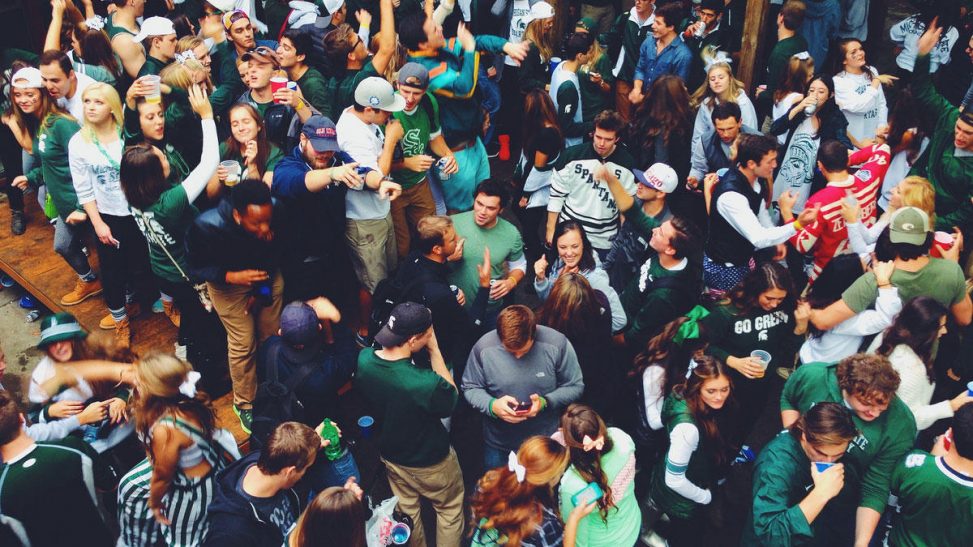Although crowds are normally masses of people gathering together to have a good time, and measures like a bollard post or several are often put into place in order to help manage crowds as best as possible, being a part of them can be very dangerous. Festivals, concerts and football matches are just a few examples. While most of these occasions run smoothly with no disasters, some crowds can have catastrophic incidents. A group of people moving at once becomes a fluid that can crush people’s lungs or throw them into the air. Suffocation, trampling and riots are just some of the dangers in crowds.
Oasys Software, a UK technology business, provides MassMotion software to help architects analyse crowd management prior to the final designs. The aim is to design safer environments for large crowds, to prevent the following dangers outlined by the Government:
- Crushing between people
- Crushing against fixed structures such as barriers
- Trampling
- Surging, swaying or rushing
- Aggressive behaviour
- Dangerous behaviour such as climbing on equipment or throwing objects.
The actual dangers in crowds
The leading causes of death in crowds is suffocation as a result of extensive pressure, usually to the chest. A crowd can cause forces over 4,500 Newtons being exerted. When pushed up against steel railing, the railing can be bent and those who are pressed against it? Well, you can only imagine the amount of pressure they experience.
There are number of causes of this kind of crushing and surprisingly, a stampede is one of the least likely. It can be caused from something as minor as a single fall or trip that causes a delayed chain reaction through the crowd, or a group reaction to a perceived threat, or even ‘crazed’ behaviour and the determination to attain a valued object. These causes are amplified because of a lack of communication.
In large crowds, there can be very little, if any, communication between the rear, the body and the head of the crowd. The pressure on those at the front is a result of those at the rear of the crowd who have more movement. As they continue to press forward, the head of the crowd begins to collapse which sends an illusion of movement to the rear, spurring them on to continue to push.
Examples
Unfortunately, there are a number of examples of crowd catastrophes which show signs of the three main causes.
Lack of communication:
In 1981, Greek football fans were killed when they tried to leave a match in Athens stadium, finding the gates locked. While the head of the crowd were aware of the situation, the rear of the crowd had no way of knowing this was the case and continued to press forward, causing 24 deaths.
‘Craze’ behaviour:
In 1989, 96 people were killed and more than 170 injured at Hillsborough Stadium in Sheffield, England. When a larger than expected fanbase tried to enter the stadium, the police opened all of the gates to allow the flow of fans to enter before the game began. In doing so, fans without tickets surged into the stadium along with ticket holders causing a pile up pushing fans into enclosed terraces and against metal fences.
Reaction to perceived threat:
In 1985, a riot by English and Italian fans at a European Cup Final in Brussels led to spectators trying to escape the violence. This led to 38 deaths by asphyxia and over 437 people were injured.
Preventative measures
Preventing disasters in a crowd can be difficult as there are a lot of factors which you can’t control. The first issues to tackle, and one which in most events you can control, is crowd density. By putting a limit on the amount of guests, you can make sure there isn’t an overflow of people in one place at the same time. This can, however, be unrealistic for events such as religious gatherings.
Other ways to prevent include improved communications and plan a timed exit. Communication can be improved with stewards. These can be located at different points of the crowd to ensure there are communication lines between the rear, the head and the body of the crowd. You can also use rope instead of steel railing to separate crowd areas, meaning in the event of crowds pushing, guests aren’t pushed against steel railings. A timed exit in a large event, where people from different levels exit at different times, is another popular prevention method.
Technology is also helping fight against crowd crushing and other dangers. Using tools like MassMotion, those in charge of buildings or crowd control should first run simulations to test the stresses of pedestrian flow and crowds. These tools can help in evacuation planning, giving an unparalleled insight into the unique spectacle of crowd movement. It can also help in the design stages of a building so that architects can plan ahead for a safer environment.


